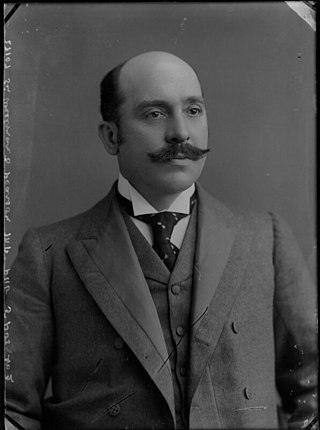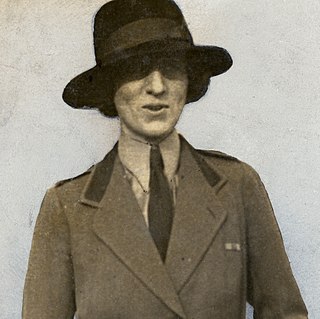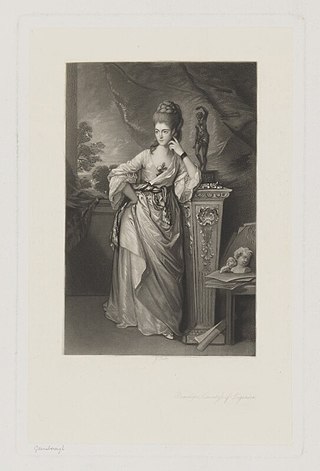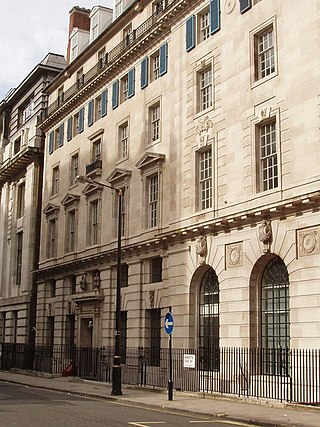Related Research Articles

Thomas Denman, 3rd Baron Denman, was a British aristocrat and politician who served as the fifth Governor-General of Australia, in office from 1911 to 1914.

Emma Alice Margaret Asquith, Countess of Oxford and Asquith, known as Margot Asquith, was a British socialite and author. She was married to British Prime Minister H. H. Asquith from 1894 to his death in 1928. Known for her wit, in late Victorian society she was a member of the famed aristocratic group of intellectuals called "The Souls". An opponent of women's suffrage, whose autobiography was lampooned, Lady Oxford and Asquith was a controversial yet colourful character in her time.

The Royal College of Nursing (RCN) is a registered trade union and professional body in the United Kingdom for those in the profession of nursing. It was founded in 1916 as the College of Nursing, receiving its royal charter in 1928. Queen Elizabeth II was the patron until her death in 2022, King Charles III continued the royal connection and became patron in 2024. The majority of members are registered nurses; however student nurses and healthcare assistants are also members. There is also a category of membership, at a reduced cost, for retired people.

Weetman Dickinson Pearson, 1st Viscount Cowdray,, known as Sir Weetman Pearson, Bt between 1894 and 1910, and as Lord Cowdray between 1910 and 1917, was a British engineer, oil industrialist, benefactor and Liberal politician. He was the owner of the Pearson conglomerate.

Gertrude Mary Denman, Baroness DenmanGBE was a British woman active in women's rights issues including the promotion of Women's suffrage in the United Kingdom. She was also the wife of Lord Denman, the 3rd Baron Denman, fifth Governor-General of Australia, and she officially named Australia's capital city Canberra in 1913.
The High Steward of Colchester is a ceremonial office awarded by Colchester City Council, Essex, England.
Dame Doris Winifred Beale, was a British military nurse and nursing administrator who served as Matron-in-Chief of Queen Alexandra's Royal Naval Nursing Service from 1941 to 1944 during the Second World War. In the 1944 Birthday Honours she was appointed Dame Commander of the Order of the British Empire (DBE), a first in the Royal Naval Nursing Service.
Charles Torquil de Montalt Fraser was High Sheriff of West Sussex in 2006–07.

The New Cavendish Club was a London private members' club, run along the lines of a traditional gentlemen's club, although it had been founded as a Ladies-only club. It was located at 44-48 Great Cumberland Place in the Marylebone district.

Eva Charlotte Ellis Luckes was matron of the London Hospital from 1880 to 1919.

Emily Ann Smythe, Viscountess Strangford or Emily Anne Beaufort RRC, was a British illustrator, writer and nurse. There are streets named after her and permanent museum exhibits about her in Bulgaria. She established hospitals and mills to assist the Bulgarians following the April Uprising in 1876 that preceded the re-establishment of Bulgaria. She was awarded the Royal Red Cross medal by Queen Victoria for establishing another hospital in Cairo.
Mary Snell Rundle RRC was a British nursing reformer. She was the first ever Secretary of the Royal College of Nursing and co-ordinated the College's work for over 17 years.
Rebecca Strong was an English nurse who pioneered preliminary training for nurses.

Alice Helena Alexandra Williams, also known as Alys Meirion, CBE, was a Welsh bard, painter, humanitarian, and voluntary welfare worker.
Annie Pearson, Viscountess Cowdray, GBE was an English society hostess, suffragist and philanthropist. She was nicknamed the "Fairy Godmother of Nursing" due to her financial patronage of the Royal College of Nursing and her work to promote district nursing throughout England and Scotland. She served as the President of the Women's Liberal Federation from 1921 until 1923 and was also the Honorary Treasurer of the Liberal Women's Suffrage Union. She was the only woman to hold the office of High Steward of Colchester, serving from 1927 until her death in 1932.

The Liverpool Maternity Hospital was established as the Lying-in Hospital and Dispensary for the Diseases of Women and Children in Horatio Street, Scotland Road, Liverpool, in November 1841. It was replaced by the Liverpool Women's Hospital in November 1995.

Hon. Penelope Ligonier, styled Viscountess Ligonier from 1766–1772, was an English aristocrat and socialite. She is most remembered for her affair with the Italian poet Count Alfieri, which led him to a duel with her husband Edward, Viscount Ligonier, followed by an adultery trial.

Dame Ethel Hope Becher, was a British nurse who served in the War Office as matron-in-chief of the Queen Alexandra's Royal Army Nursing Corps from 1910 to 1919.

Annie Sophia Jane McIntosh CBE, RRC was a British nurse and nursing leader. She was a Matron of St Bartholomew's Hospital, London (1910–1927), promoted the fledgling College of Nursing Ltd, and served on several wartime committees.

Rachael Annie Cox-Davies CBE, RRC Bar was a British nurse, matron of the Royal Free Hospital, a leader in establishing the nursing profession in the United Kingdom and founding member of the Royal College of Nursing.
References
- 1 2 Archives, The National. "The Discovery Service". discovery.nationalarchives.gov.uk. Retrieved 10 March 2017.
- ↑ Caring for Women Veterans: A Brief History of the Cowdray Club, Nursing Clio editorial collective, 28 September 2017
- ↑ Philip Howard. 'Women invade the 'Naval and Military' world', in The Times, 1 June 1974, p.2
- ↑ Elizabeth Cayley. 'Where Women Club Together', in The Times, 28 March, 1966, p.13
- ↑ Bowman, Gerald (1967). The Lamp and the Book : the Story of the RCN 1916-1966. London: Queen Anne Press. pp. 72–74.
- ↑ London Metropolitan Archives, ref: A/COW/93 - Collected AGM Minutes for the Cowdray Club
- ↑ Archives, The National. "The Discovery Service". discovery.nationalarchives.gov.uk. Retrieved 10 March 2017.
- ↑ London Metropolitan Archives, ref: A/COW/089 - Scrapbook of press cuttings relating to the Professional Women's Club and College of Nursing
- 1 2 3 4 Tim Newark. The In & Out: A history of the Naval and Military Club (2015), p. 171
- ↑ "Norris, H. C., "Most Pitiful Thing in the World", Tacoma Daily Ledger, Tacoma, Washington, pg. 61, 14 February 1926
- 1 2 London Metropolitan Archives, ref: A/COW/87 - a memorial booklet written by Agnes L. Douglas, who was private secretary to Lady Cowdray 1920-1932.
- ↑ London Metropolitan Archives, ref: A/COW/56 - Visitors book for the Club
- ↑ Marion Royce. Eunice Dyke: Health Care Pioneer (2006), pp. 80-81
- 1 2 Hilary Heilbron. Rose Heilbron, The Story of England's First Woman Queen's Counsel and Judge (2012), p. 156)
- ↑ 'Miss Mary Rundle' obituary, The Times, 16 March 1937, p.18
- ↑ Nicola Upson. 'The Josephine Tey Mystery', in The Times Literary Supplement, 24 February, 2023